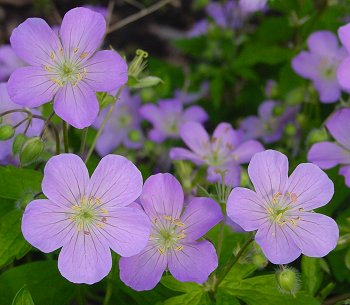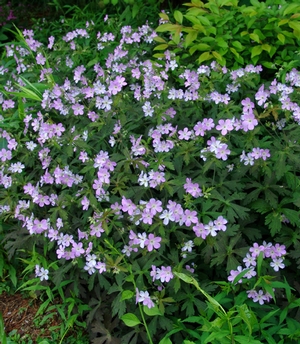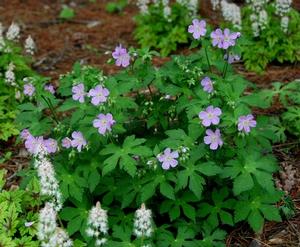Geranium maculatum
Common: cranesbillGeranium maculatum LP32 - 32 per flat
- Height: 8"-12"
- Spread: 12"-18"
- Spacing: 12"
- Hardiness Zone(s): 4-8


Geranium maculatum LP32 - 32 per flat


Best in part to full shade and average to moist, well-drained soils. Will self-sow when happy.
A common sight in Eastern moist, deciduous forests, Geranium maculatum is an easy to grow woodland native with bright magenta flowers in spring and early summer. The attractively textured palmate foliage grows in clumps 18”-24” tall and 2’ wide. The leaves are semi-evergreen and emerge from a thick rhizome that forms colonies over time. When happily placed, they will begin to self-sow in your garden and become a lovely groundcover.
Wild geranium grows best in part to full shade and average to moist, well-drained soils. It is found in the Northeast and Midwest in dry or moist woods, woodland edges, and dappled meadows. A word to the wise, as the summer goes on, Geranium maculatum can begin to show heat stress and is best planted with late summer or fall bloomers to complement the wild geranium’s late spring and early summer performance.
When the shade trial gardens were first planted years ago, a few wild geraniums were planted. Now, it is a lovely and serendipitous groundcover, intermingling with woodland phlox, ragwort, and coral bells to form a colorful textured carpet beneath a black cherry tree. Very low-maintenance, we frequently spot pollinators visiting the blooms of this plant as well as chipmunks merrily eating the seeds in the summer.